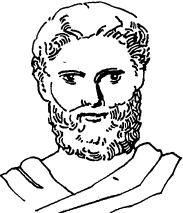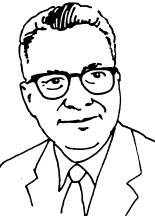What holds it together"

Democritus (460-370 B.C.)

Democritus (460-370 B.C.)
People have asked these questions for thousands of years. But only recently has a clear picture of the "building blocks" of our universe been developed. The scientists who have developed this picture work in an exciting and challenging field called high-energy particle physics. Their discoveries are summarized in the chart, Standard Model of Fundamental Particles and Interactions.
How much do you know about the latest theories and research on these ancient questions? You can find out by reading each of the statements below and placing a check mark in the proper box to indicate whether you agree or disagree.
|
| |
| 1. There are subatomic particles that have no mass and no electric charge. |
|
| 2. Some particles can travel through billions of miles of matter without being stopped (interacting). |
|
| 3. Antimatter is science fiction and not science fact. |
|
| 4. Particle accelerators are used for cancer treatment. |
|
| 5. The smallest components of the nucleus of an atom are protons and electrons. |
|
| 6. Particles and antiparticles can materialize out of energy. |
|
| 7. Particle physicists need larger accelerators in order to investigate larger objects. |
|
| 8. Magnets are used in circular accelerators to make the particles move faster. |
|
| 9. Work done by particle physicists at accelerators is helping us understand the very early development of the universe. |
|
| 10. Gravity is the strongest of the fundamental forces of nature. |
|
| 11. There are at least one hundred different subatomic particles. |
|
| 12. All known matter is made of leptons and quarks. |
|
| 13. Under construction. |
|
| 14. Friction is one of the fundamental forces of nature. |
|
| 15. Under construction. |
|

Murray Gell-Mann (b. 1929)